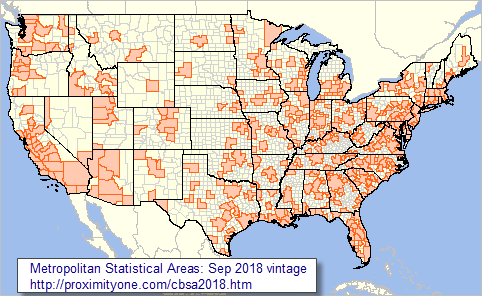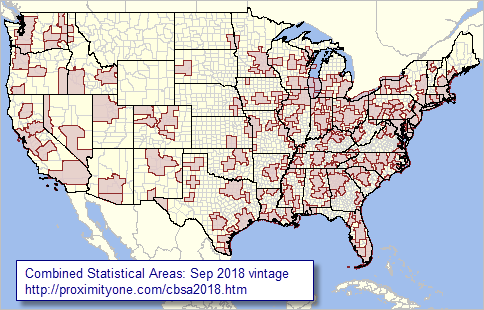.. join us in the GIS & GeoDemographics self-paced, online course.
Visual representation, maps, of demographic data by geographic area can be exciting and rewarding. Using Geographic Information Systems (GIS) can bring maps alive. Creativity is boundless. The banner at the top of the corresponding Web section presents a static view of a map rendered using GIS. This map shows the Los Angeles area by census tract. For the analyst or stakeholder, it shows something more — the percent Asian citizen voting age population by tract, overlayed with Congressional District boundaries and codes. It shows relationships, patterns. Using the power of GIS, the zoom level, colors, legend, and labeling can all be changed immediately. You, the GIS user, are at once analyst, artist and storyteller. In control of your medium, canvas, you further your benefits from use these software and data by making dynamic presentations in collaborations. Make compelling arguments. Capture your views and blend them with words and charts into documents. Welcome to the world of GIS and geodemographics.
Mapping census block demographics
The graphic shown below illustrates use of GIS software with the TIGER digital map database census block shapefile to show census blocks for two Ohio counties in context of 2018 CBSAs/Metros. Clicking on a census block (see pointer) shows a mini profile for that block.

– view developed using ProximityOne CV XE GIS and related GIS project.
Using GIS & GeoDemographics .. about the course
Examining geographic-demographic-economic characteristics, patterns and trends … researchers, policymakers, journalists, administrators, students among others. How can you most benefit from using the TIGER geographic data to meet your objectives? These data are available at no cost. Join us in the Using GIS Tools & GeoDemographics online, self-paced course. Learn all aspects of using the Census Bureau TIGER files and related Census-sourced and other Federal statistical data. Augment your professional skills; participants receive all required data, methods and tools. Your personal session is developed and coordinated by Warren Glimpse. You receive the GIS course certificate upon completion. The course may be started at any time and includes requisite Windows-based CV XE GIS software. The course assumes the participant has basic familiarity with a Windows computer, Internet and spreadsheet operations. No GIS related experience is required. Experienced GIS professionals also benefit by learning about the use and nuances of Census-sourced data and integrating these with other data. The structure includes four segments that typically require 2.5 hours each. It is feasible to complete the course in a day or two though we suggest two weeks.
Use Geographic Information Systems (GIS) with TIGER … integrate/analyze data from American Community Survey (ACS) or the decennial census (Census 2010) (Census 2020) into TIGER files to make thematic maps. Merge data from other statistical programs. Geocode your address-based data and add the geocoded data to a GIS project/map view; examine patterns. View your market/service areas and assess competitive position, unmet opportunities. Learn about procedures and strategies to develop GIS projects that meet your needs. Acquire the tools and data to perform these tasks without spending more — provided as a part of our course.
The course is not just about TIGER and demographic-economic data. It provides a well-rounded framework for how to use GIS. While TIGER is a focus, we review procedures to access and use thousands of public use shapefiles and GIS files that may be useful to you. It provides a well-rounded framework for how to use GIS.
Enroll today …
Click the enrollment button/link (opens new page) to enroll now ($395). We will contact you and provide next step information. Questions? Call us at (800)364-7656.
Data Analytics Web Sessions
Join me in a Demographics Analytics Lab session to discuss more details about accessing and using wide-ranging demographic-economic data and data analytics. Learn more about using these data for areas and applications of interest.
About the Author
— Warren Glimpse is former senior Census Bureau statistician responsible for innovative data access and use operations. He is also the former associate director of the U.S. Office of Federal Statistical Policy and Standards for data access and use. He has more than 20 years of experience in the private sector developing data resources and tools for integration and analysis of geographic, demographic, economic and business data. Contact Warren. Join Warren on LinkedIn.







